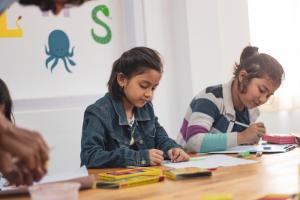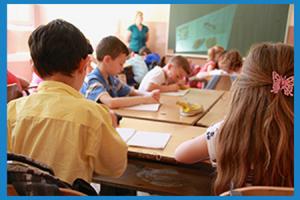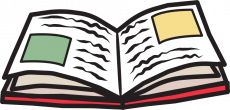10 Tips for Effective Classroom Management during Literacy Lessons
Effective classroom management is crucial for successful literacy lessons. It sets the tone for learning, ensures a productive environment, and helps pupils stay engaged. As education expert John Hattie once said, 'Classroom management is about setting expectations and following through on them consistently.'
1. Establishing Clear Expectations and Rules
 Clear expectations and rules are the foundation of effective classroom management. Pupils need to know what is expected of them during literacy lessons to maintain focus and minimise distractions. By clearly communicating behavioural guidelines, such as raising hands to speak or staying seated during independent work, teachers create structure and promote a positive learning environment.
Clear expectations and rules are the foundation of effective classroom management. Pupils need to know what is expected of them during literacy lessons to maintain focus and minimise distractions. By clearly communicating behavioural guidelines, such as raising hands to speak or staying seated during independent work, teachers create structure and promote a positive learning environment.
Additionally, it is essential to involve students in the process of establishing these expectations. When pupils have a voice in creating rules, they feel a sense of ownership and are more likely to adhere to them. By setting clear expectations and involving pupils in rule-making, teachers create a collaborative and respectful classroom culture.
2. Creating a Positive Learning Environment
 A positive learning environment fosters engagement and encourages children to take risks in their learning. Teachers can create this environment by decorating the classroom with inspiring and pupil-generated work. Posting affirmations and celebrating student achievements also contribute to a positive atmosphere.
A positive learning environment fosters engagement and encourages children to take risks in their learning. Teachers can create this environment by decorating the classroom with inspiring and pupil-generated work. Posting affirmations and celebrating student achievements also contribute to a positive atmosphere.
Additionally, building positive relationships with pupils by showing genuine interest in their lives and providing a safe space for expression can significantly impact the classroom environment. By creating a positive and supportive atmosphere, teachers cultivate an environment where children feel comfortable expressing their thoughts and ideas.
3. Using a Variety of Teaching Strategies
Every child has a unique learning style, and teachers must cater to these differences during literacy lessons. By incorporating a variety of teaching strategies, such as visual, auditory, and kinaesthetic approaches, teachers can effectively engage all students.
For example, using visual aids like graphs, charts, and images helps visual learners grasp concepts easily. Simultaneously, auditory learners benefit from listening to stories or participating in discussions. Kinaesthetic learners thrive when given opportunities to write, move, and interact with their learning materials. By incorporating diverse teaching strategies, teachers can address the needs of all learners and create a dynamic and inclusive classroom.
4. Implementing Effective Transitions
 Transitions between activities can either maintain or disrupt the flow of a lesson. Smooth transitions are essential for keeping pupils focused and minimising disruptions. Teachers can use strategies like giving clear verbal instructions, using visual cues, or playing transition music to signal the end of one activity and the start of another.
Transitions between activities can either maintain or disrupt the flow of a lesson. Smooth transitions are essential for keeping pupils focused and minimising disruptions. Teachers can use strategies like giving clear verbal instructions, using visual cues, or playing transition music to signal the end of one activity and the start of another.
Additionally, providing pupils with a clear understanding of the expectations for the next task can further facilitate smooth transitions. By implementing effective transitions, teachers can maintain momentum and ensure a seamless progression of learning activities.
5. Providing Feedback and Encouragement
Feedback plays a crucial role in developing pupils' writing skills and boosting their confidence. Regular feedback, both positive and constructive, provides pupils with guidance and helps them understand their strengths and areas for improvement. In addition to feedback, teachers should also provide encouragement and praise for pupils' efforts. Recognising pupils' progress and achievements builds their confidence and motivates them to continue working towards their goals. By providing feedback and encouragement, teachers create a supportive and growth-oriented learning environment.
6. Utilising Visual Aids and Interactive Resources
Visual aids and interactive resources are powerful tools that enhance learning and make literacy lessons more engaging. Teachers can use visual aids such as anchor charts, graphic organisers, or multimedia presentations to illustrate concepts and make them more accessible to pupils.
 Interactive resources, such as the Mighty Writer mat with sentence clouds and velcro symbols, allow children to actively participate in the learning process. These tools provide a tactile and hands-on experience, making writing more enjoyable and memorable. By utilising visual aids and interactive resources, teachers can create a dynamic and multi-sensory learning environment.
Interactive resources, such as the Mighty Writer mat with sentence clouds and velcro symbols, allow children to actively participate in the learning process. These tools provide a tactile and hands-on experience, making writing more enjoyable and memorable. By utilising visual aids and interactive resources, teachers can create a dynamic and multi-sensory learning environment.
7. Incorporating Peer Collaboration and Discussion
Peer collaboration and discussion provide valuable opportunities for pupils to learn from each other and develop their language and communication skills. Teachers can incorporate activities such as pair work, group projects, or book clubs to encourage collaborative learning. By engaging in discussions and sharing ideas, pupils deepen their understanding of literacy concepts and learn from different perspectives.
Moreover, collaboration fosters teamwork and empathy, essential skills for future success. By incorporating peer collaboration and discussion, teachers create a cooperative and inclusive learning environment.
8. Adapting Lessons for Diverse Learners
Every classroom consists of children with diverse backgrounds, abilities, and learning needs. To ensure that all pupils can actively participate and succeed in literacy lessons, teachers must adapt their lessons accordingly. This may involve providing differentiated materials, offering additional support, or modifying tasks to suit individual pupils' needs.
By personalising teaching and considering each pupil's strengths and challenges, teachers create an inclusive and supportive learning environment. Accommodating diverse learners not only promotes their academic growth but also nurtures a sense of belonging and acceptance in the classroom.
9. Managing Time Effectively
 Time management is vital for maximising learning outcomes during literacy lessons. Teachers should carefully plan and allocate sufficient time for each activity, ensuring that they cover all planned content.
Time management is vital for maximising learning outcomes during literacy lessons. Teachers should carefully plan and allocate sufficient time for each activity, ensuring that they cover all planned content.
Additionally, setting clear time expectations for tasks and transitions helps pupils stay focused and understand the pacing of the lesson. To manage time effectively, teachers can utilise strategies such as creating a visual timetable or using timers to keep activities on track. By managing time effectively, teachers create a structured and efficient learning environment.
10. Being Flexible and Responsive
Flexibility and responsiveness are essential qualities for effective classroom management. Teachers should be prepared to adjust their approaches based on pupils' responses and engagement levels. This may involve modifying activities, providing additional support, or offering alternative learning materials.
By being flexible and responsive, teachers demonstrate their commitment to meeting pupils' diverse needs and ensuring that every child can actively participate in literacy lessons. Flexibility also allows for spontaneous learning opportunities and encourages pupil-led inquiries.
Looking to create a literacy-rich environment in your classroom (or home)?
Read our blog: "Creating a Literacy-Rich Environment: Fosterign a Love for Reading and Writing" today!
